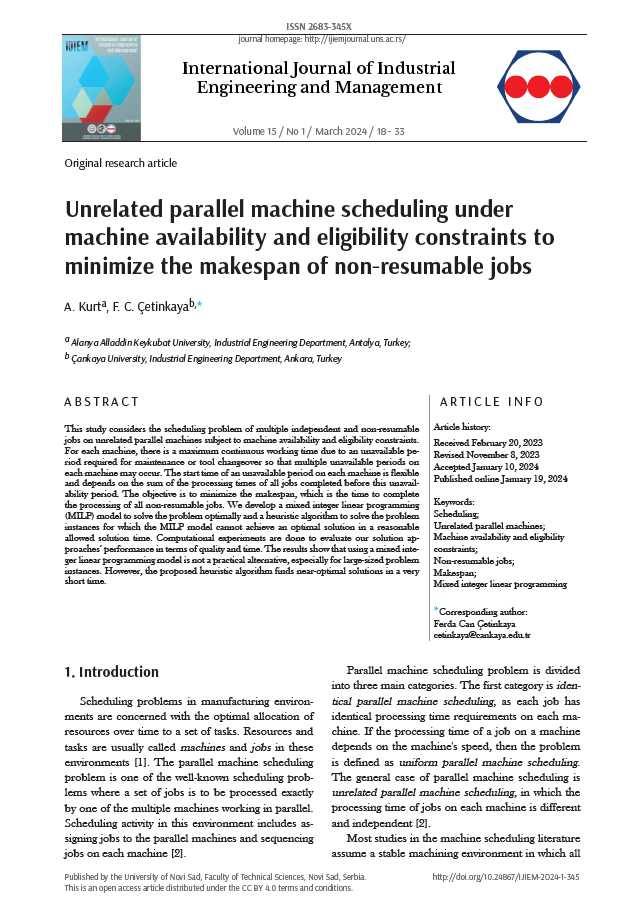Unrelated parallel machine scheduling under machine availability and eligibility constraints to minimize the makespan of non-resumable jobs

Published 2024-03-11
abstract views: 510 // REFERENCES (PDF): 0
Keywords
- Scheduling,
- Unrelated parallel machines,
- Machine availability and eligibility constraints;,
- Non-resumable jobs,
- Makespan
- Mixed integer linear programming ...More
How to Cite
Copyright (c) 2024 International Journal of Industrial Engineering and Management

This work is licensed under a Creative Commons Attribution 4.0 International License.
Abstract
This study considers the scheduling problem of multiple independent and non-resumable jobs on unrelated parallel machines subject to machine availability and eligibility constraints. For each machine, there is a maximum continuous working time due to an unavailable period required for maintenance or tool changeover so that multiple unavailable periods on each machine may occur. The start time of an unavailable period on each machine is flexible and depends on the sum of the processing times of all jobs completed before this unavailability period. The objective is to minimize the makespan, which is the time to complete the processing of all non-resumable jobs. We develop a mixed integer linear programming (MILP) model to solve the problem optimally and a heuristic algorithm to solve the problem instances for which the MILP model cannot achieve an optimal solution in a reasonable allowed solution time. Computational experiments are done to evaluate our solution approaches’ performance in terms of quality and time. The results show that using a mixed integer linear programming model is not a practical alternative, especially for large-sized problem
instances.
Article history: Received (February 20, 2023); Revised (November 8, 2023); Accepted (January 10, 2024); Published online (January 19, 2024)

